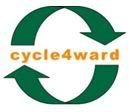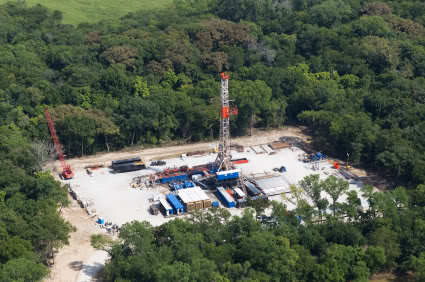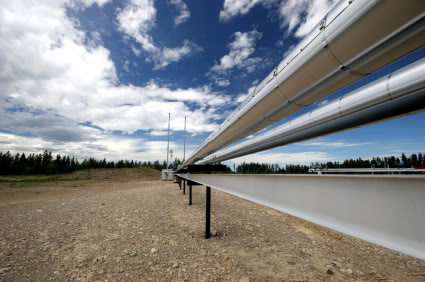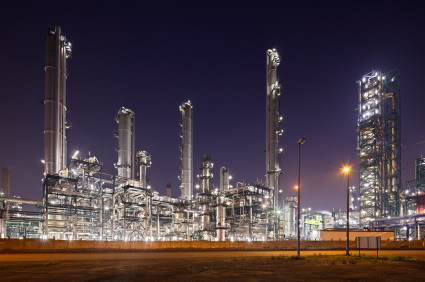ALL4’s: Is That Your Final Answer?
Last Month’s Answer and Winner:
If you knew, as Steve Riner did, that June 29th is the date that the summer sunset starts to occur earlier and that on December 9th the winter sunset starts to happen later, you could have won last month’s “Is That Your Final Answer” quiz. When on July 22nd, Bill Straub was alerted to fact that there was an extra week before the onset of earlier sunsets his mood was noticeably improved. Now if only we could cure his melancholy following a bad golf outing or a Penn State football loss. Thanks to everyone who participated in the quiz this month.
Question: 
The August “Is That Your Final Answer” question involves the distributive property in mathematics that you learned in grade school and a physical trait shared by a few of our ALL4 employees. With the latest round of new engineers and scientists that have begun working at ALL4, the designation of tallest employee is now up for grabs. Historically, John Egan has been the tallest, but two years ago Glenn Watson reigned tallest. With engineers Tom Saylor and Rob Orange recently starting, the title will require official measurement and this fact, along with the distributive property of mathematics, comprise the two factors in this month’s question. If a steel band was tightly wrapped around the equator of the earth’s surface (approximately 24,900 miles), how much additional length would need to be added to the band such that the band would be loose enough for any of our ALL4 employees, even the 6′ 5” ones, to walk under the band everywhere along the equator?
Answer:
Please e-mail your answer to final.answer@all4inc.com. Include in the e-mail your name, answer, and address (to receive your prize).
The final answer feature of 4 The Record is designed to test your knowledge across the environmental field, quiz you on the building blocks of air quality rules, stump you on ALL4 general trivia, and challenge you with brain teasers that have perplexed us. The first correct answer e-mailed to us will qualify the respondent for free ALL4 gear and will enter the winner in our end-of-the year “Final Answer Championship.” The subsequent month’s 4 The Record will identify the winner and the correct answer from the previous month’s question. You must be an active subscriber of 4 The Record to win a monthly prize and be eligible for the championship prize. ALL4 employees and family members are not eligible to compete. Hope you enjoy this feature and good luck!
(Re) Introducing Cycle4ward!
The best kept secret about ALL4 used to be EnviroReview, our customized monthly environmental regulatory update product. But thanks to the efforts of Annalise Matulewicz, Kristin Gordon, and the rest of the EnviroReview team, more and more clients have been exposed to the value of EnviroReview. So what is the new best kept secret at ALL4? Well, we submit that it is ALL4’s sister company Cycle4ward. And just like EnviroReview, we intend to bring Cycle4ward front and center so that the benefits offered by Cycle4ward can be considered by ALL4 clients. Since Cycle4ward has been around for seven years, here is a re-introduction to Cycle4ward and a discussion of what services it can offer for you.
Cycle4ward was formed in 2004. ALL4 principal John Egan receives the credit for conjuring a name that dovetails with Cycle4ward’s original mission, the recycling of industrial byproducts or waste from one facility forward to another facility, where the byproducts could be used as a raw material or even fuel (cycling material forward, get it?). In theory and in practice, this repurposing of materials has been extremely beneficial for companies trying to solve a disposal issue and companies looking for an alternate source of materials or fuel.
The key individual at Cycle4ward has been Mike Luybli. Mike’s career experience at a cement manufacturer that utilized a variety of waste streams as alternate fuels established him as an ideal candidate to provide the practical and creative solutions that are often needed when a facility needs a home for its by-products or wastes. As an example of Cycle4ward’s success, Mike was asked about helping a power plant with its calcium sulfate-based scrubber waste material. For years the scrubber waste material had been landfilled at a significant cost to the facility. Mike’s first task was to evaluate the analytical properties of the scrubber waste material. Analytically, the material was essentially gypsum. Mike then looked through his Rolodex (actually it was his Outlook Contacts list) and identified a contact that could use this “synthetic gypsum” as a raw material. A few operational changes and some environmental agency correspondence completed the process and what was once a waste with a landfill cost was now a new raw material with a cost less than the virgin raw material.
Mike has done his job so well over the past couple of years that in order for Cycle4ward to continue its ability to grow, ALL4 principal Dan Holland recently joined Mike to handle some of the operational burden. Both Mike and Dan intend to reach out to ALL4’s clients and contacts to explore whether there are unrealized opportunities concerning the manner in which materials are handled, processed, or generated at their facilities. As an ALL4 client, how would your 
NO2 NAAQS Implementation Status Quo (For Now)
U.S. EPA has posted its responses to states’ initial designation recommendations for the new 1-hour nitrogen dioxide (NO2) National Ambient Air Quality Standard (NAAQS). Determining which areas are attaining or not attaining the 1-hour NAAQS will require the operation of a new network of near roadway ambient monitors that will not be in place until 2013. As such, states submitted their initial designation recommendations as “unclassifiable” or “attainment.” In response, U.S. EPA has recommended designating the entire country as “unclassifiable/attainment” with respect to the new 1-hour NAAQS since the enhanced ambient monitoring is not yet available and no existing ambient monitor is measuring ambient levels in excess of the NAAQS. U.S. EPA also recommended that states consider the geographic extent of how they separate their air basins to manage air quality.
For now, there is no indication that U.S. EPA will utilize air dispersion modeling as a 
Marcellus Shale – The Saga Continues…Or Does It?
On May 30, 2011, New York Governor Andrew Cuomo’s office issued an order giving the New York State Department of Environmental Conservation (NYSDEC) until July 1, 2011 to complete a draft of an Environmental Impact Statement (EIS) outlining the processes and procedures to be implemented as permit conditions for drilling in the Marcellus Shale with the use of high-volume hydraulic fracturing (“hydrofracking”). On June 6, 2011, the New York State Assembly passed A.7400 (Sweeney)/S.5592 (Carlucci), a bill that extends the moratorium on new permits for natural gas drilling operations that use hydrofracking to June 1, 2012. The State Senate has apparently not taken any action on this bill. On July 1, 2011, NYSDEC released the latest draft of the EIS, which included the following recommendations:
- A prohibition of hydrofracking in the New York City and Syracuse Watersheds.
- A ban on drilling in primary aquifers and state-owned land including parks, state forest land, and wildlife management areas.
- A prohibition of hydrofracking except on privately held lands under rigorous and effective controls.
- A provision that NYDEC will draft and issue regulations to codify the recommendations into state law.

New Rule Revisions for Oil and Gas Industry
On July 28, 2011 U.S. EPA released its draft Standards of Performance for New Stationary Sources (NSPS) and proposed revisions to the National Emission Standards for Hazardous Air Pollutants (NESHAP) rules affecting natural gas production, transportation, distribution, and storage. The Federal Register notice for the proposal appeared on August 23, 2011. The NSPS and NESHAP also affect oil production. Currently, the NSPS (40 CFR Part 60, Subparts KKK and LLL) regulate only gas processing plants while U.S. EPA’s NSPS proposal (40 CFR Part 60, Subpart OOOO) will affect well sites where “fracking” is taking place and will potentially regulate multiple pieces of equipment that have not been previously considered for regulation (e.g., compressors, pneumatic controllers, and condensate and crude oil storage tanks). The updated NESHAP standards for natural gas transmission and storage (40 CFR Part 63, Subpart HHH) consider emissions from glycol dehydrators and the revised NESHAP for oil and natural gas production (40 CFR Part 63, Subpart HH) affects glycol dehydrators, crude oil
U.S. EPA will elicit public comment for a 60-day period beginning on the date the proposed rules are published in the Federal Register. The public will also be able to participate in three (3) scheduled public meetings. ALL4 will provide a more detailed summary of the proposed rules in the September edition of 4 The Record.
Slade’s Corner – Permitting For Greenhouse Gases
Don’t forget your greenhouse gases (GHGs). Since July 1, GHGs have become a very important driver in air quality construction permit applications and even Title V renewal applications. Even if you have been permitted as a minor source (facility) and do not have a Title V permit, the various air pollution control agencies are asking applicants to demonstrate that they are not subject to Prevention of Significant Deterioration (PSD) permitting for GHGs. 
Slade’s Corner is a regular column appearing in ALL4’s 4 The Record. John Slade is a Sr. Consultant with ALL4 and spent many years as a regulator with the Pennsylvania Department of Environmental Protection (PADEP), including nearly 14 years as Chief of the Division of Air Quality Permitting. Want to reach John or suggest an upcoming topic for Slade’s Corner? Contact John at jslade@all4inc.com or 717.822.0009. Slade’s Corner is an opinion-based column, and its content does not necessarily represent the opinion of ALL4 as a whole.
Note from the author: This article is based on my candid opinions as of the date it was written and I reserve the right to change my mind as information evolves!
Portions of Refinery MACT Withdrawn by U.S. EPA
On July 18, 2011, U.S. EPA published notice in the Federal Register (76 FR 42052) that the residual risk and technology review portions of the revised National Emission Standards for Hazardous Air Pollutants (NESHAP) from Petroleum Refineries (Refinery MACT 1) were being withdrawn from the final rule. The final rule had been signed and made available on U.S. EPA’s website on January 16, 2011. However, the final rule was never published in the Federal Register because, four days later, the Administration ordered all agencies to withdraw from the Office of the Federal Register “all proposed or final regulations that have not been published in the Federal Register so that they can be reviewed and approved by a department or agency head.” Upon further review, U.S. EPA determined that the residual risk and technology reviews may not accurately characterize the risk posed by this source category, and the partial withdraw of the final rule was subsequently issued.
It just so happens that there are two (2) MACT regulations that potentially apply to the Petroleum Refinery source group, with the second MACT regulation affectionately referred


